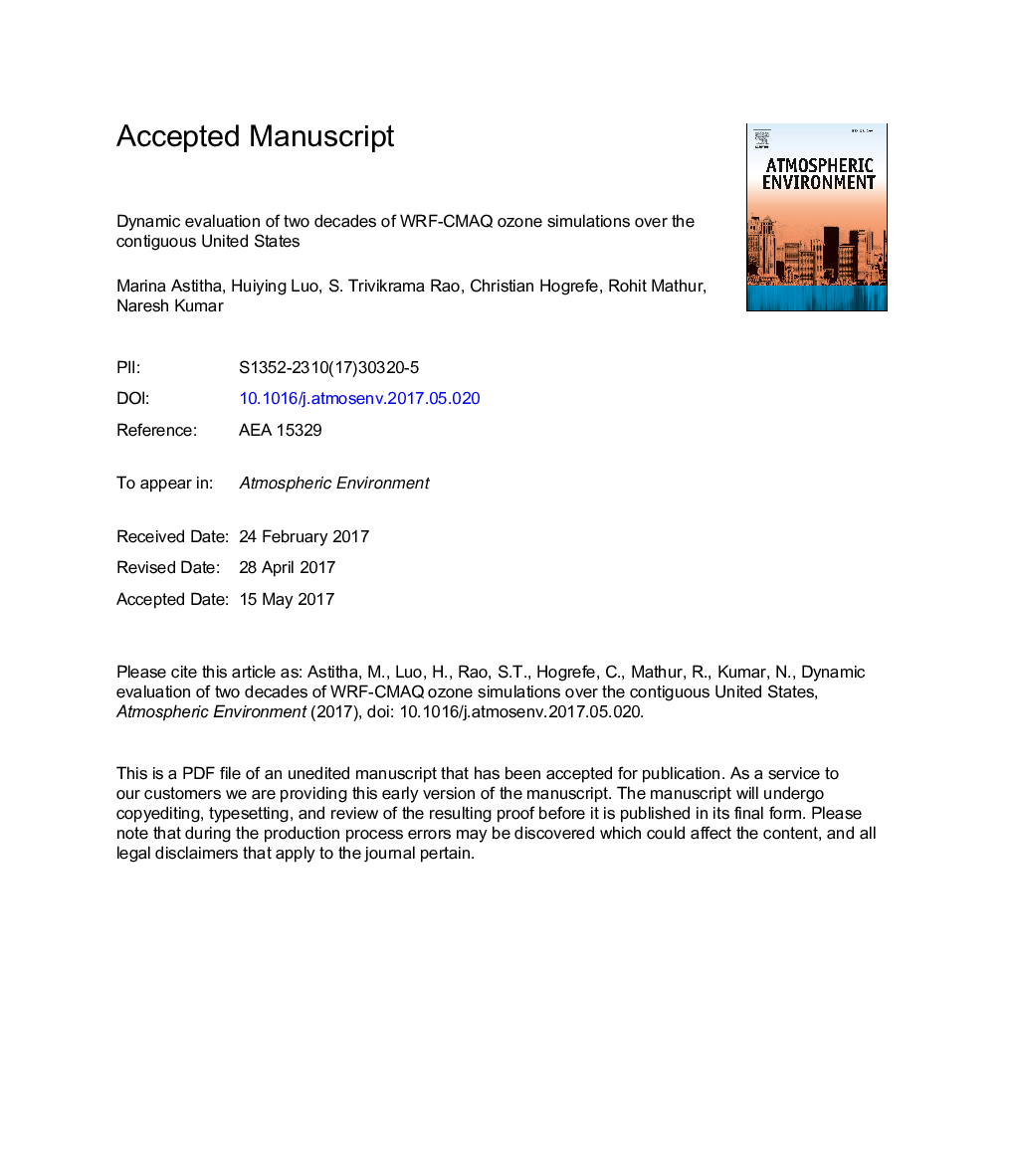| Article ID | Journal | Published Year | Pages | File Type |
|---|---|---|---|---|
| 5753115 | Atmospheric Environment | 2017 | 28 Pages |
Abstract
Dynamic evaluation of the fully coupled Weather Research and Forecasting (WRF)- Community Multi-scale Air Quality (CMAQ) model ozone simulations over the contiguous United States (CONUS) using two decades of simulations covering the period from 1990 to 2010 is conducted to assess how well the changes in observed ozone air quality are simulated by the model. The changes induced by variations in meteorology and/or emissions are also evaluated during the same timeframe using spectral decomposition of observed and modeled ozone time series with the aim of identifying the underlying forcing mechanisms that control ozone exceedances and making informed recommendations for the optimal use of regional-scale air quality models. The evaluation is focused on the warm season's (i.e., May-September) daily maximum 8-hr (DM8HR) ozone concentrations, the 4th highest (4th) and average of top 10 DM8HR ozone values (top10), as well as the spectrally-decomposed components of the DM8HR ozone time series using the Kolmogorov-Zurbenko (KZ) filter. Results of the dynamic evaluation are presented for six regions in the U.S., consistent with the National Oceanic and Atmospheric Administration (NOAA) climatic regions. During the earlier 11-yr period (1990-2000), the simulated and observed regional average trends are not statistically significant. During the more recent 2000-2010 period, all observed trends are statistically significant and WRF-CMAQ captures the observed downward trend in the Southwest and Midwest but under-predicts the downward trends in observations for the other regions. Observational analysis reveals that it is the magnitude of the long-term forcing that dictates the maximum ozone exceedance potential; there is a strong linear relationship between the long-term forcing and the 4th highest or the average of the top10 ozone concentrations in both observations and model output. This finding indicates that improving the model's ability to reproduce the long-term component will also enable better simulation of ozone extreme values that are of interest to regulatory agencies.
Related Topics
Physical Sciences and Engineering
Earth and Planetary Sciences
Atmospheric Science
Authors
Marina Astitha, Huiying Luo, S. Trivikrama Rao, Christian Hogrefe, Rohit Mathur, Naresh Kumar,
